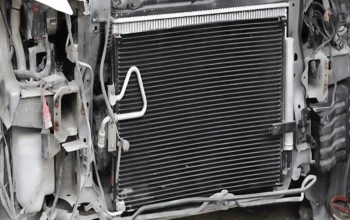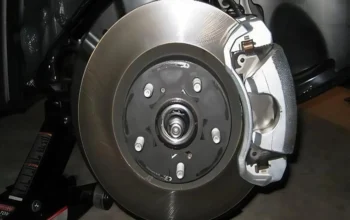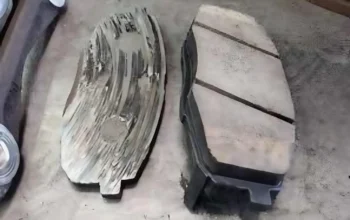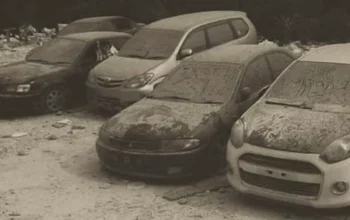Have you ever stepped on the brakes and felt like your car or motorcycle was dragging? That could be a sign of a stuck brake caliper. When the caliper doesn’t release properly, it causes the brake pads to stay in contact with the rotor. This creates extra resistance and wears out your braking system faster than it should. If you don’t fix the brake caliper soon, it could lead to serious issues—or worse, an accident.
In this guide, we’ll walk you through how to fix a stuck brake caliper, common symptoms to look out for, and what causes this issue in both cars and motorcycles. Whether it’s a seized brake caliper, a sticking brake caliper, or just a messy piston that won’t budge, we’ve got you covered.
Table of Contents:
What Causes a Stuck Brake Caliper?
Before jumping into the fix, it helps to know what’s going wrong. A caliper sticking can result from dirt, rust, or wear and tear. Here’s what might be causing your issue:
1. Dirt and Debris Build-Up
Brake systems attract dust and grime, especially if you ride or drive in dirty environments. These particles can jam the caliper piston, making it hard to release.
2. Rust Inside the Caliper
Moisture leads to rust. Over time, rust forms on the caliper’s inner surfaces and piston walls. This adds friction and makes your caliper freeze in place.
3. Worn or Damaged Rubber Seals
The rubber seals keep the hydraulic brake system sealed tight. If they crack or tear, dirt and water sneak in, leading to a sticking brake caliper or worse—a seized one.
4. Stuck or Dry Guide Pins
The guide pins help your caliper slide smoothly when braking. If they dry up or corrode, the caliper may lock on one side and cause uneven braking.
5. Uneven Brake Pad Wear
When one side of the brake pad wears faster, it often points to a caliper piston that’s not moving evenly. This can cause the caliper to grip too tightly.
6. Contaminated Brake Fluid
Over time, brake fluid can get dirty. This affects hydraulic pressure, and dirty fluid may prevent your caliper piston from returning to its resting position.
7. Overheating
If you ride or drive aggressively, excessive heat can melt rubber parts inside the caliper or warp metal components—causing everything to stick.
How to Tell If Your Brake Caliper is Stuck
Here are some signs your caliper might be sticking:
- Vehicle pulls to one side when braking
- Brakes feel sluggish or don’t release quickly
- Burning smell near the wheel
- Grinding or squeaking noises
- Wheel feels hot after driving
How to Fix a Stuck Brake Caliper

Ready to get your hands dirty? Let’s go through the step-by-step fixes you can try safely at home.
1. Clean and Lubricate the Caliper
Start by removing the wheel and inspecting the caliper. Spray brake cleaner generously and scrub away grime using a wire brush. Focus on the piston and guide pins. Once clean, apply brake grease to all moving parts.
2. Free the Piston Manually
If the caliper piston is stuck, you can try pushing it back in using a brake piston tool or C-clamp. Do this slowly and steadily to avoid damage. If it refuses to budge, try one of the next methods.
3. Use the Pedal Pressure Trick (Cars Only)
For cars, start the engine and pump the brake pedal hard. If one piston comes out and another doesn’t, tie the moving one with wire, then press the pedal again. This trick forces fluid into the stuck piston.
4. Try Heat for Stubborn Pistons
As a last resort, remove the caliper and carefully apply heat using a torch or heat gun. Heat can break down rust and soften hardened seals. Just be careful—this method is risky if done incorrectly.
5. Replace Damaged Rubber Seals
Remove the old rubber seals and inspect for cracks or cuts. Install high-quality replacement seals to keep dirt and moisture out for good.
6. Rebuild or Replace the Piston

If your piston is too rusted or scratched, it’s better to replace it. Rebuild kits are available for most caliper models, or you can buy a new one if rebuilding seems too complex.
7. Bleed and Replace Brake Fluid
Flush out old fluid by bleeding the brake lines. Use fresh, vehicle-approved brake fluid to ensure proper hydraulic pressure. This can also clear small air bubbles or debris.
8. Replace the Brake Pads
If your brake pads are unevenly worn or glazed from heat, swap them out. New pads help prevent further issues and restore proper stopping power.
Preventive Tips to Avoid a Stuck Caliper
Stuck calipers don’t usually happen overnight. Here’s how you can prevent it:
1. Clean Your Brakes Regularly
Dirt is one of the biggest enemies of your brake system. Keep your calipers and pistons clean to maintain smooth performance.
2. Use High-Quality Parts
Cheap or knockoff parts often don’t fit right. Invest in OEM or high-quality aftermarket pads, pistons, and seals.
3. Replace Brake Fluid Every 1–2 Years
Moisture builds up in brake fluid over time. Changing it regularly helps prevent rust and hydraulic issues.
4. Don’t Ride the Brakes
Constant braking heats up your system fast. Use engine braking where possible and give your brakes time to cool.
Quick Fixes for Motorcycles: Sticky Caliper Piston
On motorcycles, a stuck piston is even more noticeable since it affects balance and handling. Here’s what to do:
- Remove the caliper and inspect the piston
- Push the piston out using the brake lever
- If one side moves but the other doesn’t, block the moving side
- Try heating the caliper to free the stuck side
- Clean thoroughly and replace seals if needed
Pro tip: Always re-lubricate the guide pins and double-check the caliper bolts before reinstallation.
Out-of-the-Box Tips to Free a Stuck Brake Caliper
Sometimes, you’ll come across a brake caliper piston that simply refuses to budge. Whether it’s on a car or motorcycle, a stuck brake caliper can turn a quick fix into an hours-long nightmare—unless you know a couple of unconventional tricks that might just save your day.
Here are two out-of-the-box methods that experienced mechanics (and even DIYers) have used when nothing else works:
1. Use the Engine Power to Push the Piston Out
This one’s especially useful for cars. Start the engine and press the brake pedal firmly—multiple times. The idea here is to use the hydraulic pressure to push the piston out from the caliper.
If you have dual-piston calipers, one piston might come out while the other stays stuck. To handle that, use a piece of wire or a clamp to hold the piston that’s already moving, then press the brake pedal again. This shifts all the pressure to the stuck piston.
For vehicles with a single master cylinder, sometimes giving the piston a few firm taps while pressing the brake can help release it.
2. Heat the Master Cylinder (with Caution)
If the piston still won’t move, try removing the caliper or master cylinder and carefully applying heat using a heat gun or blowtorch. Heat expands the metal, loosens rust, and can cause hardened debris to break free. In some cases, the rubber seals inside might slightly melt, which helps loosen the grip.
⚠️ Warning: This method should only be used as a last resort, and with caution. Be mindful of any rubber components, flammable parts, or nearby fluid leaks. Safety first.
These unconventional methods aren’t for everyone—but if you’re dealing with a truly stuck caliper and you’ve exhausted all the traditional fixes, they might be just the thing that gets the job done.
When to Call a Pro
If you’ve done all this and your brakes still feel off, it’s time to visit a mechanic. Brake safety isn’t something to mess with—especially on long trips or heavy traffic. If you’re unsure, it’s better to be safe than sorry.






